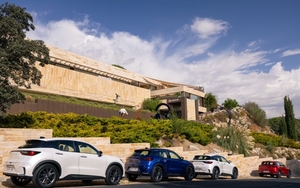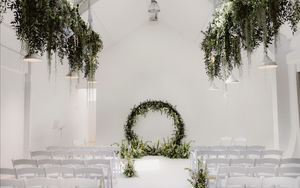THE story of three centuries of Liverpool’s docklands is told in new permanent show which opens at the Maritime Museum this week.
But nobody at a sneak preview of On The Waterfront was able to give a definitive answer to a question that has puzzled me for 21 years: Was the Cunard Building only half finished?
In 1994, when Liverpool was bidding to become City of Architecture (Glasgow won what was a two-horse race), I made a study of the city’s best known buildings.
And in the deep, vast basements beneath the Cunard, the building manager shared a nugget of rare information that would set the middle of the famous Three Graces apart.
It was, he insisted, intended to be twice as high as the building we know today. The top would have been eye level with the Liver Birds on top of the building next door.
That was why, he said, the building had a flat roof, ready to receive a slightly narrower phase two. World War One put paid to that, and the building was finished as it looks today, with its flat roof.
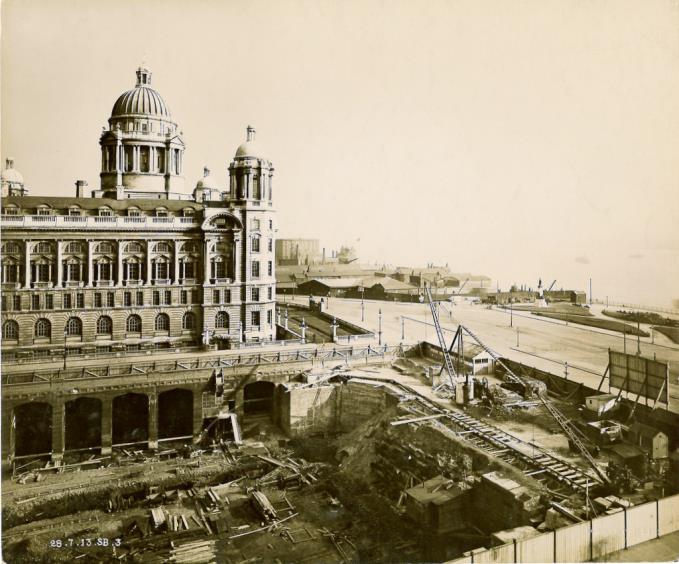 Stewart Bale - Cunard Foundations, 1913, going 100 ft below ground and the railway track which would bring coal to stoke fires that would heat the building
Stewart Bale - Cunard Foundations, 1913, going 100 ft below ground and the railway track which would bring coal to stoke fires that would heat the buildingSarah Starkey, curator of Maritime and Slavery Archives at the Merseyside Maritime Museum, couldn’t confirm or deny the tale, but doubted it was true. “Try the University of Liverpool where the Cunard Building archives are held,” she shrugged (I will, eventually).
Ian Murphy, deputy director at the Maritime Museum, didn’t know either, in fact he was completely unaware of the story.
Right now, however, the Cunard looms large in a fascinating exhibition that tells the story of Liverpool’s docks and the journey that turned a small north of England river into one of the world’s great maritime ports.
Marking the 300th anniversary of the city’s Old Dock - the world’s first commercial wet dock – On The Waterfront chronicles the period from the 18th century up to the present day. Personal stories illustrate how the waterfront has changed and the impact it has had on the city and the lives of local people.
Photographs, films, displays and a rare outing for some of the treasures on show include an oil painting from the 1600s showing what the Mersey waterfront looked like long before the building of the first dock. There is also a draft itinerary for Prince Albert’s visit to Liverpool in 1846 when he opened the eponymous Albert Dock alongside a register of vessels showing the first ship using it and huge quayside scales used to weigh cargo.
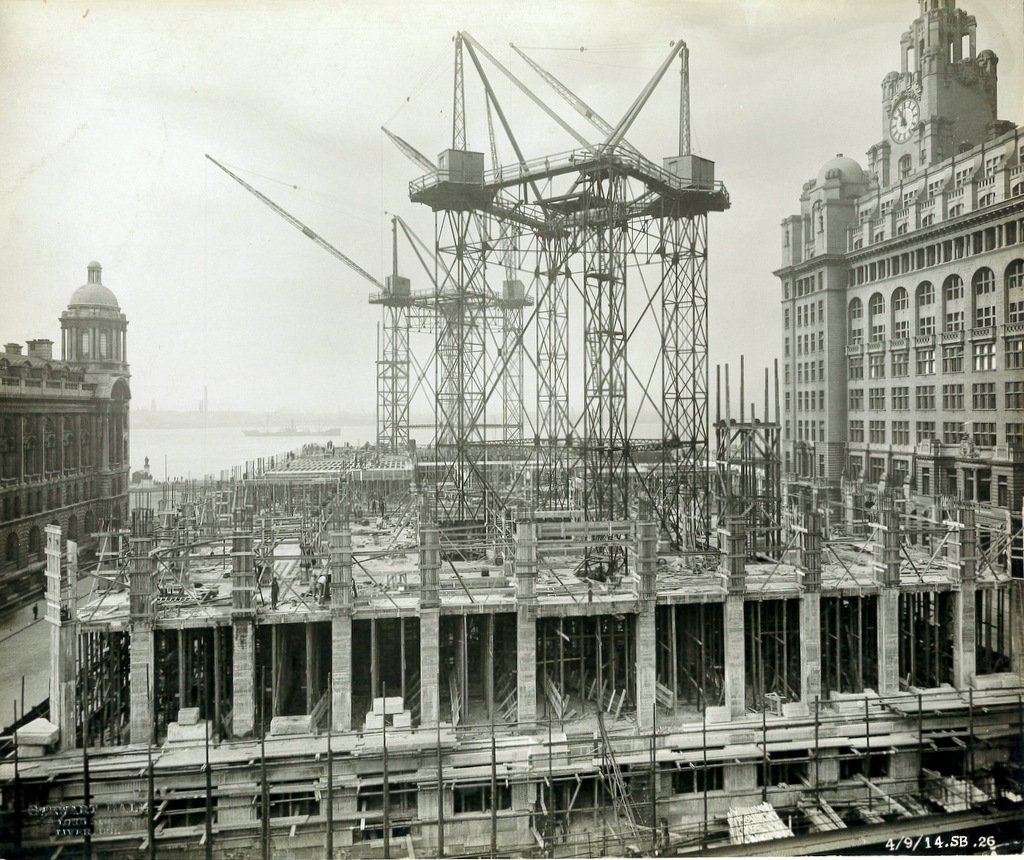 Stewart Bale - Cunard Building Construction, 1914 -Courtesy of National Museums Liverpool (Merseyside Maritime Museum)
Stewart Bale - Cunard Building Construction, 1914 -Courtesy of National Museums Liverpool (Merseyside Maritime Museum)A section dedicated to the Three Graces will include reproductions of two newly donated Stewart Bale images of the Cunard building under construction, never displayed before - one dating back to 1913. There is also a brochure for the “new” Cunard building from 1916, showing the interiors of the building.
The exhibition also recognises 21st-century changes to the waterfront including the construction of the Museum of Liverpool, opened in July 2011 and bridging the area between the Albert Dock and the Pier Head, allowing people to walk the length of the city’s waterfront. The Museum of Liverpool has received more than 3.8 million visitors since first opening, and became England’s most visited museum outside of London in 2012.
Ian Murphy said: “The landscape of Liverpool’s maritime heritage is now a defining symbol of the city and forms part of its World Heritage Site. On the Waterfront is a record of the changing fortunes of the port, the city, and its people. It’s an important story and we are delighted to be able to tell it on the historic 300th anniversary year of the opening of Liverpool’s Old Dock, the world’s first commercial wet dock.
“Merseyside Maritime Museum itself was once a warehouse for high value goods like tea, silk, sugar and spirits in the Port of Liverpool’s Albert Dock - a powerhouse of industry. While Liverpool’s docks relocated downriver towards Seaforth, the building fell into disrepair as part of the wider decline and fall of the city’s traditional docks.
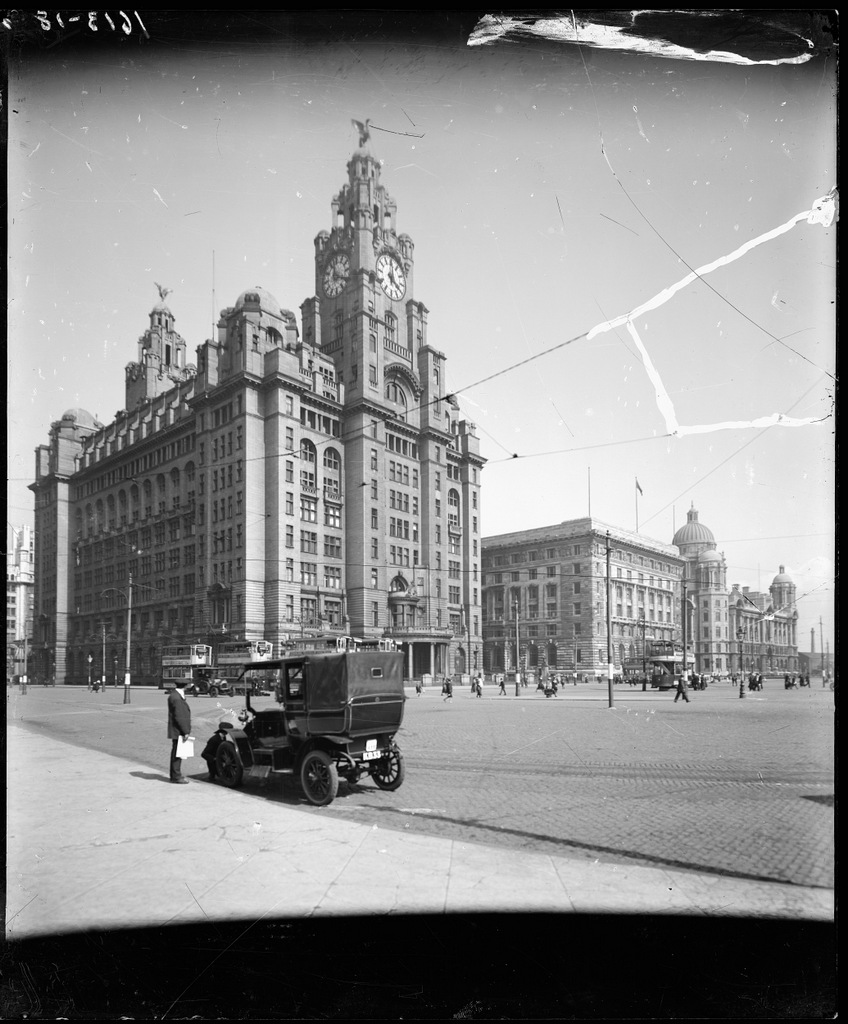 Royal Liver building, Cunard building and Port of Liverpool building 1920
Royal Liver building, Cunard building and Port of Liverpool building 1920“But in 1986 the building reopened as the Merseyside Maritime Museum – the first public building to open at the dock -starting the renaissance of the waterfront, and becoming the venue we know today; one of the most visited museums in the region. This building is a perfect encapsulation of the story we are showing in the wider exhibition - the changing fortunes of the docks - and we are proud to be opening it here”.
Ian Pollitt, of Peel Holdings which today owns the Port of Liverpool, said: “Anyone who visits the city understands the key role the docks play in today's Liverpool. That role is set to grow in importance as we continue to make the most of the city's best asset: its waterfront”.
*On The Waterfront, Merseyside Maritime Museum, Albert Dock, Liverpool, L3 4AQ, Open daily 10am-5pm. Telephone 0151 478 4499
 Stevedores, Albert Dock, 1945, by Edward Chambré Hardman
Stevedores, Albert Dock, 1945, by Edward Chambré Hardman Liverpool Landing Stage, 1937
Liverpool Landing Stage, 1937 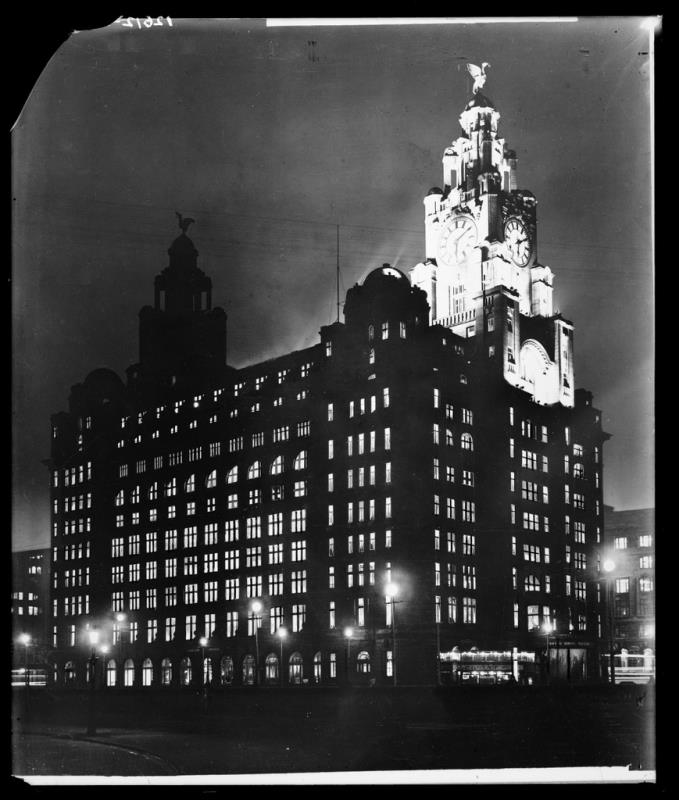 The Royal Liver Building at night, 1936
The Royal Liver Building at night, 1936 Port of Liverpool building and excavations for Cunard and Liver buildings, 1907
Port of Liverpool building and excavations for Cunard and Liver buildings, 1907
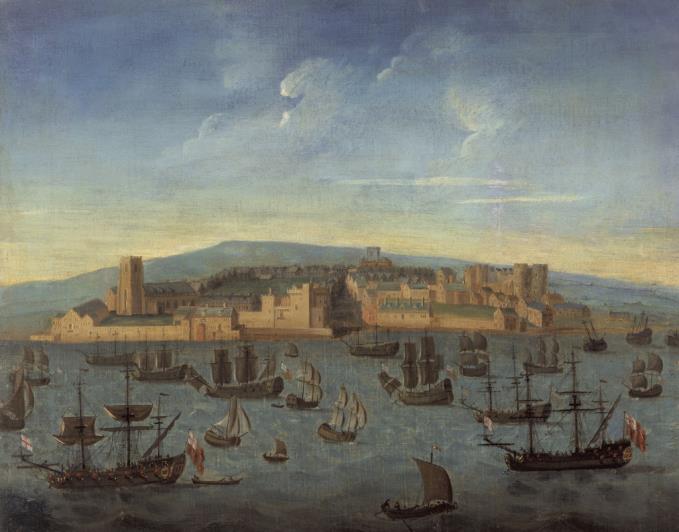 Liverpool in 1680, unknown artist
Liverpool in 1680, unknown artist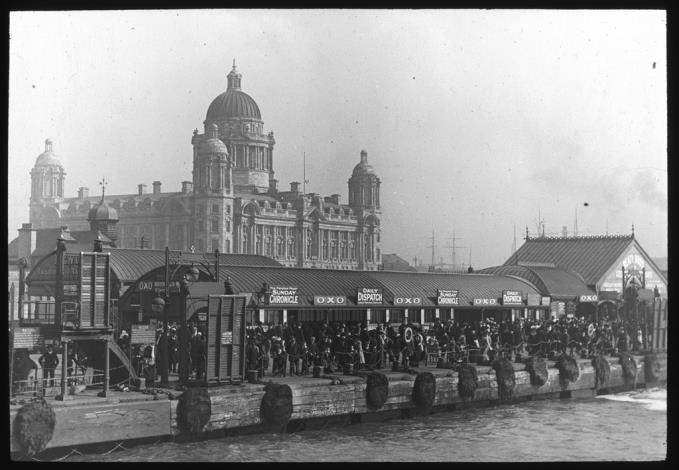 The Ferry Stage, Liverpool, 1907
The Ferry Stage, Liverpool, 1907













